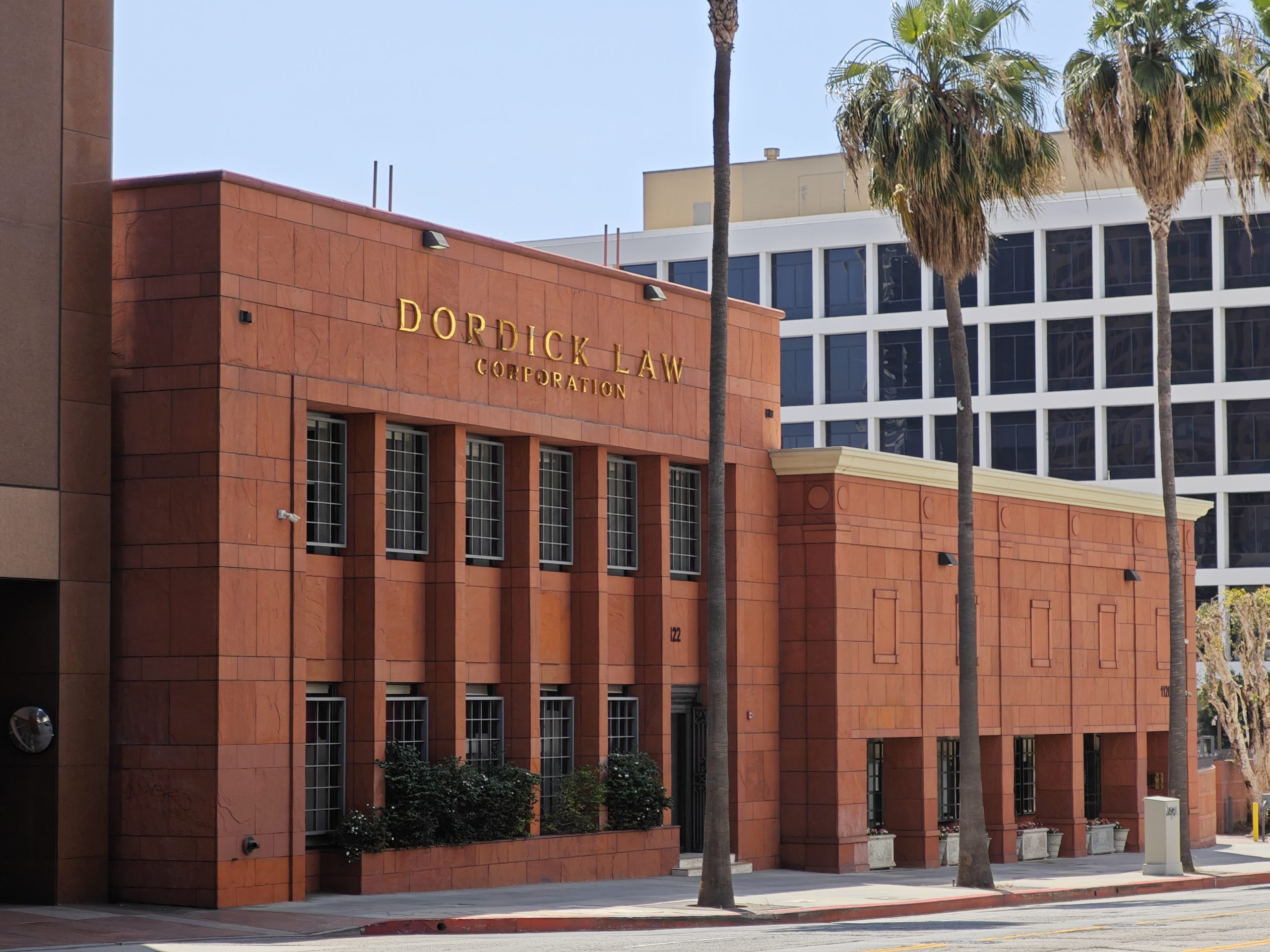Any injury, especially that caused by another person, is harmful to the victim and has the potential to disrupt their life temporarily. Catastrophic injuries, however, have the potential to change your life permanently. Catastrophic physical injuries are serious and can lead to severe emotional distress or mental illness, like depression or post-traumatic stress disorder (PTSD). If an injury is catastrophic and if a person suffers such an injury due to the fault of another person or entity in California, maximum compensation should be the goal of any personal injury lawsuit.
At Dordick Law Corporation, our personal injury attorneys in Southern California (Los Angeles, Beverly Hills, Riverside, San Diego & surrounding areas) aim to obtain maximum compensation for our clients. We do not settle unless our clients receive the total allowed by law. There are many factors that go into determining a just and fair amount of compensation, and through our analysis and committed representation, we will identify what that is and pursue it. Contact us at (310) 551-0949 or fill out this form to schedule a free consultation and learn more about how we can help you and your loved ones.
Understanding Catastrophic Injuries in California
In most states, catastrophic injuries are defined as severe injuries that have a life-changing impact on the person who experiences them. These are injuries that typically never fully heal or can never be fully repaired. They are also injuries that require significant, short-term medical treatment and consistent, long-term rehabilitative care.
People suffering from catastrophic injuries may not be able to return to gainful employment for an extended period, if ever. Victims of catastrophic injuries may never lead the life they enjoyed prior to the injury, and that is why these injuries deserve special consideration.
The most common types of catastrophic injuries involve the spinal cord, brain injuries, burns, or loss of limbs.
Spinal Cord Injuries
Spinal cord injuries can result in changes to a person’s strength and sensations. Not all spinal cord injuries are catastrophic, but those that cause paralysis, specifically paraplegia or quadriplegia, are considered catastrophic. In the worst case scenario, spinal cord injuries are fatal.
Traumatic Brain Injuries (TBI)
Brain injuries can result from sudden impact like an object striking the head or an object penetrating the skull and entering the brain. Brain injuries cause a range of symptoms, including changes to emotion, language, and cognitive abilities.
Like spinal cord injuries, not all brain injuries are catastrophic. TBIs can range from mild to moderate to severe. Treatment for moderate or severe TBI varies from medications to brain surgery or skull fracture repairs. In more severe TBI cases, life expectancy can be shortened dramatically.
Burn Injuries
Third-degree burns cause damage to body tissue and muscles. Scarring is significant, and skin grafting is often required. Pain from third-degree burns is extensive as is any subsequent disfigurement.
Limb Loss
The loss of a limb is devastating and irreparably alters that person’s quality of life. A severely injured limb must often be amputated to prevent serious and potentially fatal infections. Amputations, however, have their own complications, like “phantom limb” pain or an increased risk of deep vein thrombosis (DVT), heart attack, and other infections. Additional surgery or treatment may be required to minimize pain or repair issues that develop post-amputation.
Other Potentially Catastrophic Injuries
Other potentially catastrophic injuries include:
- Loss of sight
- Loss of hearing
- Facial deformities
- Nerve damage
- Neurological damage
- Severe organ damage
- Mesothelioma or other occupational illness
Though not exhaustive, this list provides an idea of what other injuries may be catastrophic and, thus, require special attention with respect to available remedies.
Three Common Characteristics of Catastrophic Injuries
In personal injury cases, there are differences between catastrophic and other types of injuries. Three common characteristics exist in catastrophic injuries that do not exist in non-catastrophic injuries.
1. Severity of Damage
Catastrophic injuries cause damage much more severe than a regular injury. Victims’ lives are significantly and often permanently altered. Once fully independent, many victims may require assistance with daily living activities. It is not unusual for people with catastrophic injuries to live in a medical treatment facility or have a full-time medical caregiver.
2. Recovery Time
Recovery time for normal, regular injuries is much less than the time needed to recover from catastrophic injuries. While it varies with catastrophic injuries, recovery time can range between months to years. In many cases, full recovery is not possible. The severity of the injury is life-altering. The recovery time is potentially life-long. The trauma is sustained and enduring.
3. Sustained Trauma
Catastrophic injuries cause significant trauma to victims. Severe trauma takes considerable time for recovery. Recovery generally includes medication, therapy, counseling, and constant medical supervision.
Catastrophic v. Non-Catastrophic Injuries: An Example
Take a severe TBI versus a mild TBI as an example. A severe TBI can require weeks or months in the hospital, including surgeries. In addition, the victim may have to continue with a treatment plan for years to come without fully recovering or suffering from disabilities as a result of the brain injury.
Compare severe TBI to a mild case where the victim is left unconscious for less than 30 minutes and may only need a thorough check from a doctor before going home. With plenty of rest, a full recovery may occur within a week or two. Here, the severity is not life-altering. The impact of the injury is short-lived, and the individual is able to make a full recovery and return to normal life activities.
In this example, it is clear why classifying an injury as catastrophic is important because it can make a real difference when determining just and fair compensation.
Impact of Catastrophic Injuries in California on Compensation
When a person is injured by another person or entity, the idea behind a settlement or lawsuit is to make the injured person whole again after considering their losses. In catastrophic injury cases, being “made whole” – physically, mentally, or emotionally – will likely not be possible. As such, your losses are more substantial and enduring. The person may suffer more physical pain and emotional distress, have higher medical bills, lose out on earning wages, be denied the ability to engage in activities they once loved, and more.
What’s more: Catastrophic injuries do not impact the individual alone but also their loved ones.
Compensation must reflect all these things, and that is why it matters if an injury is categorized as catastrophic.
Although it varies by state, catastrophic injuries generally qualify for a higher level of compensation for economic and non-economic damages. In some cases, they might even qualify for punitive damages.
Economic Damages
Economic damages are the easiest type of damages to calculate for most personal injury claims. By the time a settlement occurs or trial commences, the injured party has received complete or near complete medical treatment. The economic damages are calculated by adding up the medical expenses by using receipts, invoices, and statements.
Catastrophic injury cases, however, are different. There may be extensive future economic damages to consider. Calculating the value of these damages usually requires expert analysis and testimony. This testimony can attest to the value of the loss of future earned income as well as to the importance, extent, and duration of medical care necessary for the injured party.
Non-Economic Damages
Non-economic injuries are intangible and, thus, harder than economic injuries to quantify. They cover compensation for pain and suffering, loss of companionship, loss of enjoyment of life, and loss of consortium. In catastrophic injury cases, non-economic damages can be considerable due to the impact the injuries have on the victim’s quality of life.
Punitive Damages
Punitive damages are designed to (1) punish the wrongdoer who caused the accident; and (2) serve as a deterrent to keep others from engaging in the same behavior. While not typically awarded in personal injury cases, they may be warranted in cases that result in catastrophic injuries. Much of it depends on the jurisdiction, as some states do not allow punitive damages in personal injury cases.
At Dordick Law Corporation, our personal injury attorneys will advise you on the extent of compensation you can anticipate, and whether that could involve punitive damages.
Contact a Personal Injury Attorney in Southern California Today
Doctors often recommend extended medical care and physical therapy to victims of catastrophic injuries because the resulting conditions may continue indefinitely. Our California accident lawyer will guide you through your treatment process and keep accurate records of your progress. Our legal team will represent you and your family in seeking injury compensation from those at fault. This monetary recovery will help cover your medical bills and compensate you, in part, for your pain and suffering.
Contact Dordick Law Corporation today by filling out our online form or calling us at (310) 551-0949. We will schedule a free consultation to discuss your case and a plan to move forward toward recovery.


